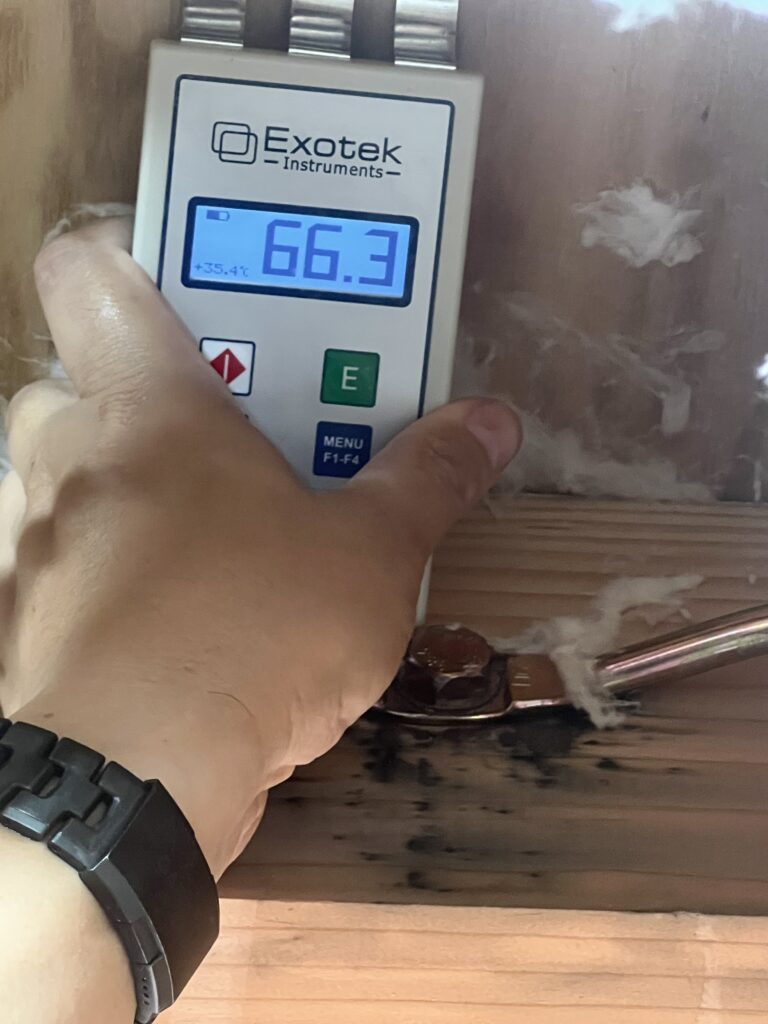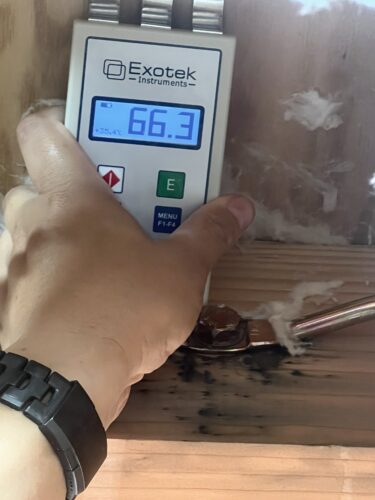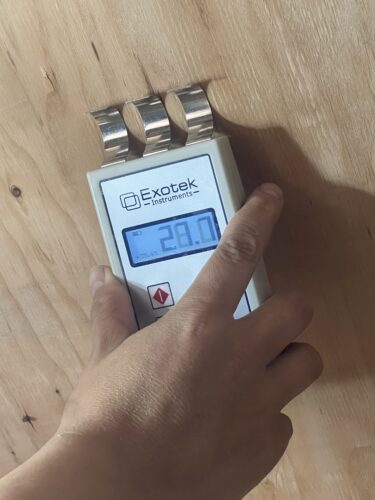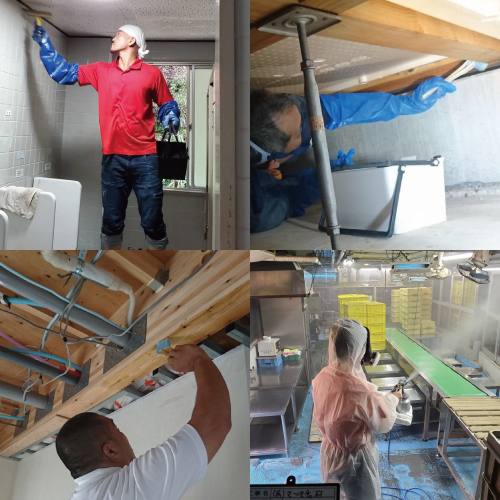Issue raised Families living in luxury homes tend to feel reassured by the beauty of their interiors and their insulation, but in fact there are increasing cases of “invisible mold spores” triggering respiratory problems and allergies. What you’ll learn by reading this article By reading this article, you’ll learn about the risks of indoor mold, which is especially dangerous for children and the elderly, and you’ll concretely understand the causal relationship between respiratory and allergic symptoms and how to prevent them. Benefits of reading this article It covers a wide range of countermeasures, including humidity, ventilation, cleaning, and professional care, so you can immediately start putting them into practice at home and take a step toward protecting a healthy living environment.
1. Health Risks of Mold Hidden in Luxury Homes
Even in beautiful and seemingly clean luxury homes, mold can pose serious health risks. Modern high-sealed and high-insulation housing traps moisture, creating ideal conditions for mold growth. Although not always visible, mold spores often float through the air, posing a threat—especially to children and the elderly with weaker immune systems.
1-1. Why Children and the Elderly Are Especially Vulnerable
Children’s immune systems are still developing, while older adults often have weakened immunity. This makes both groups particularly sensitive to airborne mold spores. Mold exposure can trigger asthma, skin inflammation, and other allergic reactions. For the elderly, prolonged exposure can lead to chronic respiratory issues or worsen conditions like COPD or pneumonia.
1-2. How Mold Triggers Respiratory and Allergic Reactions
Mold is a type of fungus that releases microscopic spores into the air. Inhalation of these spores can provoke allergic responses like sneezing, coughing, and congestion. In sensitive individuals, it may even lead to asthma attacks. Mold is not just a cosmetic issue—it is a hidden health threat that often goes unnoticed until symptoms worsen.
2. Mold as Indoor Air Pollution: Invisible Threats from Spores
The quality of indoor air is heavily influenced by invisible factors, including mold spores. In high-sealed homes, poor ventilation allows these spores to accumulate. This not only worsens air quality but also increases the risk of respiratory issues for occupants.
2-1. Airborne Mold Spores and Deteriorating Air Quality
When mold grows, it releases countless tiny spores that disperse into the air. These spores can enter the respiratory system and cause allergies, asthma, and even neurological issues due to toxins known as mycotoxins. Poorly maintained air purifiers may unintentionally circulate these spores, worsening the problem.
2-2. Poor Ventilation and Humidity in High-Performance Homes
Luxury homes often prioritize energy efficiency and comfort, but that results in airtight structures with little natural airflow. This causes moisture to build up, especially during humid seasons or winter condensation, creating the perfect environment for mold. Without proper ventilation or usage of systems, mold spreads silently and steadily.
3. The Deep Connection Between Mold, Allergies, and Respiratory Illness
Mold spores are a known trigger for allergic reactions and are increasingly linked to long-term respiratory diseases. Children and the elderly, who are more sensitive to air quality, face heightened risks of developing chronic conditions due to prolonged mold exposure.
3-1. Mold-Induced Rhinitis, Coughing, and Asthma
When inhaled, mold spores irritate nasal passages and lungs, causing immune reactions that result in runny noses, sneezing, coughing, and breathing difficulty. In severe cases, asthma attacks can occur. Mold is recognized as a primary cause of allergic rhinitis and bronchial asthma in many households.
3-2. Long-Term Exposure and Its Effects on Vulnerable Populations
Continuous exposure to mold can exacerbate respiratory conditions. In children, this may manifest as chronic asthma or reduced concentration. In the elderly, mold can worsen existing health issues or even lead to life-threatening pneumonia, making a mold-free home environment essential.
4. Where Mold Tends to Grow Indoors and Why
Mold can thrive in areas we often overlook—besides bathrooms and kitchens, it grows behind wallpaper, inside closets, and around windows due to condensation. Even the design and materials used in luxury homes may unintentionally promote mold growth.
4-1. Bathrooms, Kitchens, and Window Condensation
Bathrooms and kitchens naturally accumulate moisture, and without regular cleaning and proper ventilation, mold develops on ceilings, tiles, and rubber seals. During colder months, windows in insulated homes often trap condensation, leading to hidden mold behind walls or on frames.
4-2. Household Appliances That May Spread Mold
Air purifiers, humidifiers, and heaters—while intended to improve comfort—can become breeding grounds for mold if not regularly maintained. Filters and tanks collect dust and moisture, which mold thrives on. These appliances then distribute spores throughout the home, compromising air quality.
5. Early Detection and Regular Mold Checks
Preventing mold-related health issues depends on early detection. Visible mold often indicates a more severe hidden infestation. Recognizing the early signs and conducting regular checks are key steps in reducing mold-related risks.
5-1. Warning Signs Before Mold Becomes Visible
Musty odors, unexplained respiratory symptoms, and discolored wallpaper or window frames are early indicators of mold. If your family experiences prolonged nasal issues, coughing, or eye irritation, it may be due to unseen mold in your living space.
5-2. How to Monitor Humidity and Airflow at Home
Mold thrives in environments where humidity exceeds 60%. Using a hygrometer, aim to keep indoor humidity around 50%. Open windows twice a day for at least 15 minutes and regularly clean ventilation systems. These simple habits drastically reduce mold risks.
6. Practical Home-Based Mold Prevention Strategies
Preventing mold involves consistent ventilation, moisture control, and thorough cleaning. These practical steps, when integrated into daily routines, can protect your family’s health and extend the life of your home’s materials and systems.
6-1. When and How to Ventilate, Dehumidify, and Clean
Open windows in the morning and evening for airflow. Use dehumidifiers to maintain ideal humidity levels. Clean often-overlooked areas like behind furniture, air vents, and under sinks. Regular cleaning of these areas removes dust and nutrients that mold feeds on.
6-2. Safe and Effective Household Mold Cleaning Products
Chlorine bleach, alcohol, and natural options like baking soda and vinegar are common mold-fighting agents. Always wear gloves and a mask when using bleach, and ensure the area is well-ventilated. Natural solutions are safer for families with children and pets.
7. Professional Mold Removal and Prevention: Why It Matters
While DIY mold solutions offer some relief, they often fall short of addressing the root cause. Professional services bring advanced techniques and equipment to ensure deep, long-lasting results. A trusted specialist can offer more than just removal—they provide prevention strategies tailored to your home’s needs.
7-1. Why Professional Mold Removal Goes Beyond Surface Cleaning
Store-bought cleaners may remove visible mold, but they rarely reach the mold growing inside walls or insulation. Professionals use specialized agents and equipment that penetrate surfaces to eliminate spores at the root. They also offer long-term preventive treatments, reducing the risk of recurrence.
7-2. Supporting Allergy and Respiratory Health with Expert Care
Professional services use mold-fighting agents that are safe for sensitive groups, including children and seniors. Advanced inspections can detect airborne spores invisible to the naked eye. Preventative treatments like anti-mold coatings and air purification help maintain a healthy environment year-round.
8. Designing Mold-Free Homes from the Ground Up
In luxury housing, beauty and comfort are key. But neglecting mold prevention in the design stage can result in future health risks. Integrating moisture control and airflow systems during construction creates a durable, mold-resistant environment.
8-1. Incorporating Ventilation Systems During Construction
Modern airtight homes need mechanical ventilation to maintain healthy air quality. Systems like 24-hour ventilators and moisture sensors help control internal humidity. Designing rooms with natural airflow paths also improves circulation and reduces trapped moisture.
8-2. Choosing Mold-Resistant and Moisture-Blocking Materials
Selecting materials that resist mold growth—such as treated wallpaper, anti-fungal paint, and moisture-blocking insulation—provides long-term protection. For hidden spaces like closets or behind walls, materials with built-in mold inhibitors help minimize unseen infestations.
9. Maximizing Air Purifier and Dehumidifier Efficiency
Air purifiers and dehumidifiers are essential tools for managing indoor mold, but their effectiveness depends on proper use and maintenance. Without care, these devices can become part of the problem.
9-1. How Poor Maintenance Can Spread Mold
When filters are dirty or water tanks are left full, air purifiers and dehumidifiers turn into breeding grounds for mold. Operating them in this state disperses spores throughout the room, undoing any air-quality benefits they might offer.
9-2. Best Practices for Filter Changes and Tank Cleaning
Follow manufacturer instructions for filter replacement—typically every 6 to 12 months—and clean pre-filters monthly. Empty and disinfect water tanks weekly. Consistent care ensures these devices improve rather than worsen indoor air quality.
10. Creating a Healthy Home for Children and Seniors
A healthy home environment goes beyond looks. For families with children or elderly members, preventing mold and ensuring clean air is a critical part of everyday comfort and well-being.
10-1. Keeping Your Home Clean While Preventing Allergies
Dust and fabric-based furnishings can trap moisture and harbor mold. Use vacuum cleaners with HEPA filters, regularly sun-dry bedding and cushions, and avoid overfilling storage areas. Clean regularly, especially in hidden or humid spaces.
10-2. Combining Lifestyle Habits and Interior Design
A healthy living space starts with conscious daily habits and smart interior planning. Leave gaps behind furniture to improve airflow. Choose easy-to-clean flooring and walls. Minimize indoor plants and keep humidity-controlled rooms like bathrooms and kitchens ventilated.





